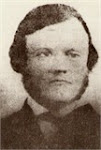I received the following from ATC press release via city administrator Pat Marsh. The email from ATC to Pat also said: "Attached is a news release regarding ATC's work next week in the Yahara River Wetlands to obtain soil borings. I wanted to bring this to your attention in case you may have Monona residents inquiring.
We will be using some specialized equipment, including a Marsh Buggy and ARGO.
We have also notified the PSC, DNR and DOT.
The landowners providing access to the Wetlands have been very cooperative.
The equipment will be working approximately 50 yards to the south and parallel to the Beltline from Stoughton Road to the First Supply property from next week until the end of February."
*** FINAL DRAFT ***
Feb. 1, 2010
From: Anne Spaltholz
aspaltholz@atcllc.com
262.506.6933 (office)
262.424.7742 (cell)
American Transmission Co. to begin soil boring in Yahara Wetlands
Environmentally friendly process will help determine pole placement
MADISON, Wis. – Although the actual construction won't begin until 2011, American Transmission Co. is starting preliminary field work this week for a new 32-mile, 345,000-volt electric transmission line through Dane County between the towns of Middleton and Christiana. The power line route along the Beltline Highway that was approved last summer by the Public Service Commission of Wisconsin includes the placement of several transmission structures in the wetlands adjacent to the Yahara River.
Determining the exact placement, depth and design of structures requires an analysis of the conditions for supporting a 120-foot, steel transmission pole. This analysis, which is accomplished through soil borings, helps determine whether the structures will be placed in soil, rocks or moisture and what provisions will be required to ensure the concrete pole foundations are adequate to secure and stabilize the weight of the poles.
"Conducting soil boring is a fairly routine task on any power line construction project," says Brian Fischer, ATC project manager. "But marshy wetland areas present additional challenges to ensure that we are minimizing disturbances to an environmentally sensitive area."
For this reason, ATC's contractors are conducting the work during the winter months using a specialized vehicle called a Marsh Buggy to access these wetlands where at least ten structures may be located. "This vehicle is designed to navigate marshy areas while minimizing impacts, and has been used successfully on similar projects in other areas of the country where environmental impacts had to be managed," says Fischer.
The Marsh Buggy, which will be visible from the Beltline Highway, will carry the soil boring equipment and will remain on site for about two to four weeks beginning this week. The vehicle measures about 25 feet long and 14 feet wide, and may be frequently visible from the Beltline. "While visually the Marsh Buggy may appear intrusive, it's the best piece of equipment available for the job and it's the best time of year to perform this type of work in this particular area," says Amy Lee, ATC environmental project manager. "In addition, ATC will have environmental staff on site monitoring this two-to-four week operation, which will also require the removal of some vegetation to allow crews to safely maneuver the vehicle and operate the soil boring equipment."
In addition to the Marsh Buggy, a second smaller vehicle similar to an ATV, called an ARGO, will be used to transport crews and supplies to and from the Marsh Buggy.
Elsewhere on the 32-mile route, crews will be conducting soil borings in the coming months using standard vehicles and also performing environmental surveying, along with other activities in advance of the start of construction in 2011. Construction is expected to be completed in 2013.
ATC owns, operates, builds and maintains the high-voltage electric transmission system serving portions of Wisconsin, Michigan, Minnesota and Illinois. Formed in 2001 as the nation's first multi-state transmission-only utility, ATC has invested $2 billion to improve the adequacy and reliability of its infrastructure. ATC now is a $2.5 billion company with 9,400 miles of transmission lines and 510 substations. The company is a member of the Midwest ISO regional transmission organization, and provides nondiscriminatory service to all customers, supporting effective competition in energy markets without favoring any market participant. For more information, visit our Web site at http://www.atcllc.com/.
###
















Sure sounds easier than running the wires underneath the bridge...... This way they get to rent a cool swamp buggy AND ruin the view on one of the most scenic portions of urban highway in the state.
ReplyDeleteI agree with your sentiment, however we are not talking about low voltage data cables, these are extremely high voltage power lines.
ReplyDelete